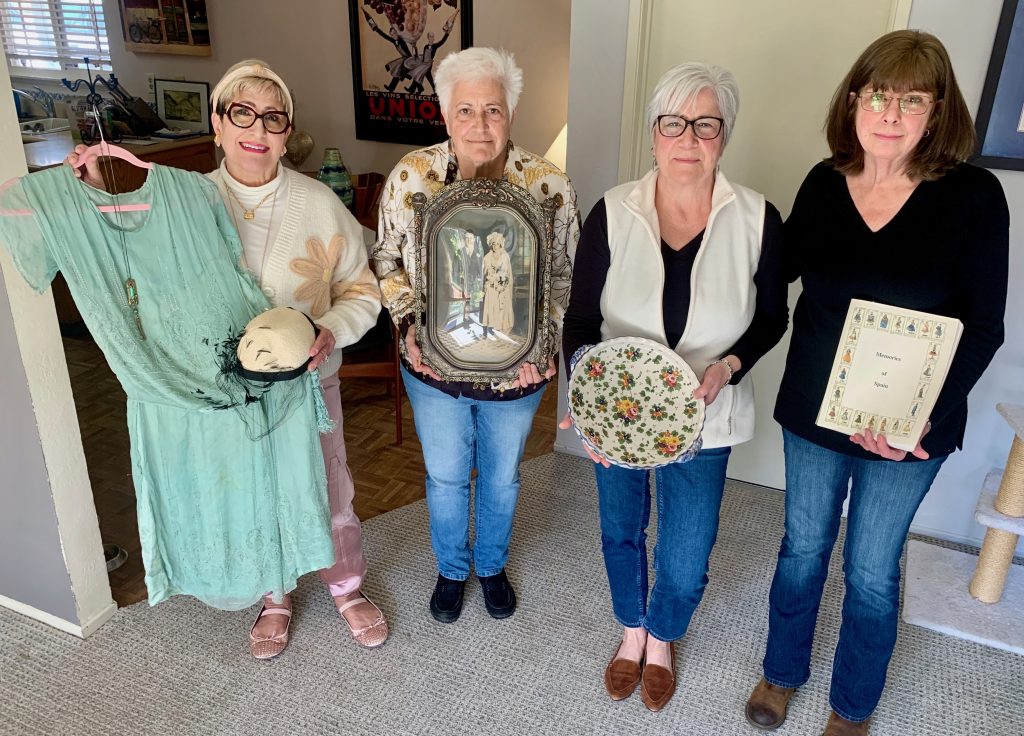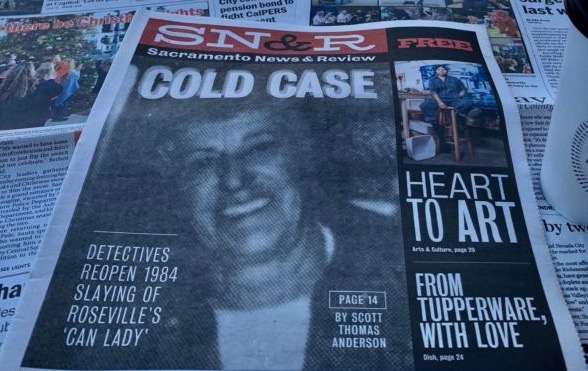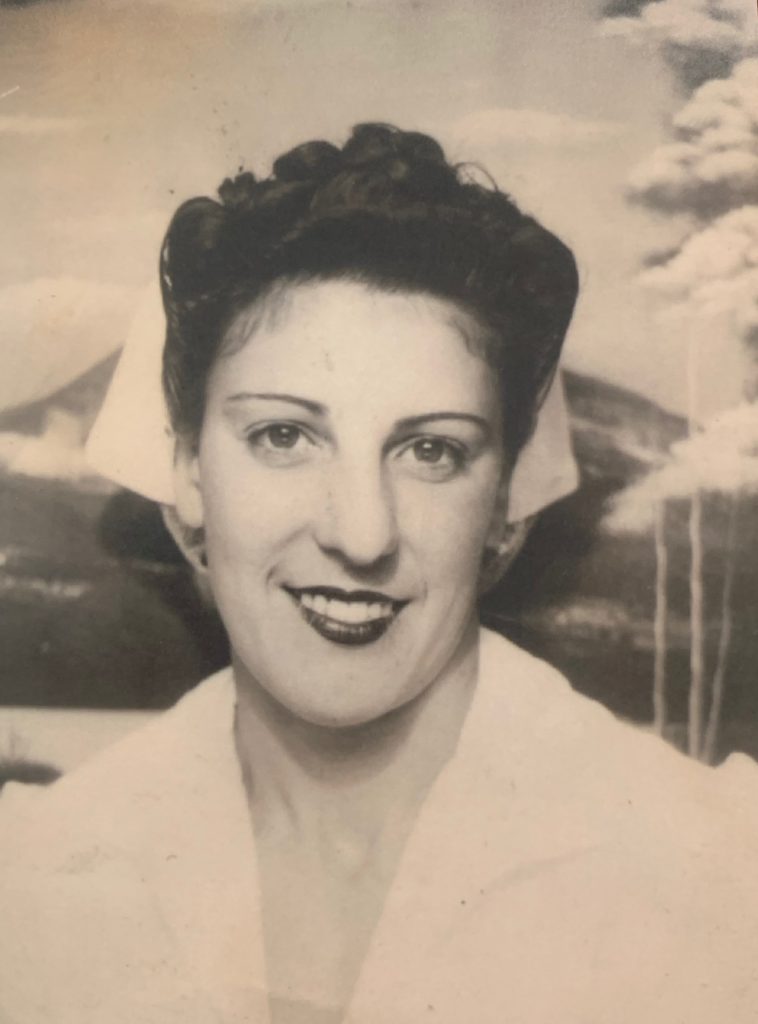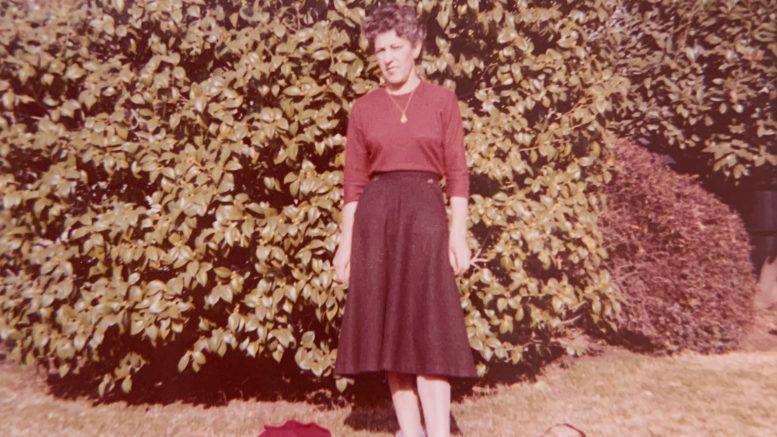Cold case SN&R has been covering breaks open with apprehension of man who was teen suspect in unrelated arson near killing scene
By Scott Thomas Anderson
For decades, Madeline Garcia’s granddaughters could only touch heirlooms from the past when reaching for the memory of a woman who was taken on a dim September morning.
They have a Prohibition-era wedding portrait of Garcia as a young bride. They have the jazzy dress and feathered flapper cap she’d worn during nights on the town. They have the ornate society book tracing Garcia’s family tree from California to Iberia. These things speak to a life that was real. For Roseville merchants, the woman those items once belonged to was an unconventional individualist, someone they referred to as “the Early Riser” or “The Can Lady”; but to those who were closest to her – those who still remain – she was ‘Grandma Garcia,’ a Spanish-American homemaker who loved cooking, crafting, gardening and putting a smile on the faces of neighborhood children.
Terri Middlekauff is Garcia’s oldest granddaughter. She was working for Sacramento City Unified School District on Sept. 26, 1984 when her husband unexpectedly arrived at the office. Middlekauff remembers being told that she had to leave with him right that minute.
“When we got to my mom’s house on College Greens, she came running outside, saying, ‘Someone murdered grandma!” Middlekauff recalls. “Then, my husband drove my father to the morgue to identify the body.”
It was decades later when SN&R published a cover story on Garcia’s case that Middlekauff and her sisters learned just how merciless the slaying was. By then, Garcia’s survivors had mainly lost hope about learning who would do the unthinkable to their grandmother. All that changed this morning when Placer County investigators slapped handcuffs on 59-year-old Richard Raymond Moore. The man had been living in Southern California, but he was no stranger to Roseville. An SN&R review of all South Placer police notices in the state archive from the fall of Garcia’s death reveals that Moore was arrested for arson just weeks later, with that incident happening some two-and-a-half blocks from Garcia’s murder scene – and on the very same street.
At the time of her killing, Garcia was a 69-year-old widow known for venturing through Roseville before daybreak, often taking a distinct tricycle from her house on Hill Avenue to Washington Boulevard and Vernon Street as she grabbed cans for recycling. On the morning that changed everything for Middlekauff and her sisters, a witness was coming down Atlantic Street and noticed Garcia laying on the ground, her body half-concealed in an alcove behind the West House hotel and saloon. Approaching police found a scene of barbarity. Garcia had been killed by repeated blows, the force of which had sent her dentures rocketing away from where her body fell. Even officers who’d seen Garcia around Roseville before had trouble recognizing her. And she had been sexually assaulted.
“To me, it seemed like a murder of rage,” noted granddaughter Sharon Garcia. “And if it was rage, you had to wonder, ‘Did this person know her?’”

That was a question Roseville homicide detective James Fujitani was considering as he stood over Garcia’s body. He and an evidence tech named Gary DeMille worked the crime scene exhaustively. Officers canvassed the downtown area, talking to men staying at the West House as well as strangers in town hopping on and off trains. Five days into the investigation, Fujitani had to pivot his efforts to a shocking double-homicide on Oakland Avenue. The detective managed to get an arrest and conviction in those murders, but hopes of finding Garcia’s assailant were starting to fade.
Long after the case went cold, and Fujitani retired, a noted homicide detective named Kurt Leatherman started pushing the investigation forward. Leatherman spent ten years regularly aligning the evidence in Garcia’s case with new forensic techniques and crime technology, while simultaneously zeroing in on, and ultimately clearing, a bevy of potential suspects. When Leatherman retired, the fattening case file that he’d built was handed to another accomplished detective, Mary Green. Between her time at the Roseville Police Department and a later promotion to head of investigations at Placer County DA’s Office, Green made sure that Garcia’s cold case was not moth-balled.
In 2020, Roseville Police Detective David Harlan and Placer DA Investigator Vince Dutto were interviewed by SN&R for the cover story “The Lonesome Death of the Can Lady.” In it, Harlan and Dutto acknowledged they were again following the trail to that terrible day on Atlantic Street in 1984.
Today, the work by Fujitani, DeMille, Leatherman, Green, Harlan, Dutto – and others like DA Investigator Ryan Bal – all culminated in the arrest of Moore in Southern California. Investigators reportedly ran body fluids preserved from the crime scene through the familial DNA sifting method, the same sequencing technique that caught Joseph D’Angelo, “Golden State Killer,” as well as Roseville murderer Michael Green, whose unsolved crime had also dated back to 1984.
The fire starter

At 2 a.m. on a November morning in 1984, workers for the Southern Union Pacific Railroad saw an older teenager bolting across the tracks of their switchyard. Behind the boy, on Atlantic Street, a pair of structures was on fire.
One of them was a storage shed for the beloved family-owned shop called Dainty Pastry, a staple in Roseville since 1946. The bakery was especially popular with the railroad crews who were known to drop by its backdoor on Atlantic Street – right where the shed was now engulfed in flames.
The blaze grew, spreading to the rear of two neighboring businesses, Divine Needlecrafts and Roseville Trophy Center. All of these shops, including Dainty’s, had storefronts facing Vernon Street across from the historic Tower Theatre.
Railmen helped police capture the young man, who by then had fled to the north intersection behind the train station. The officers obtained the name of their suspect, Richard Raymond Moore. He was 19-years-old at the time.
Later that morning, an edition of The Roseville Press-Tribune hit newsstands with a headline buried inside one of its folds that read, “Teenager held in connection with two shed fires.” It was hardly the type of frontpage treatment that Garcia’s murder had prompted in The Tribune weeks before. The notice would have only caught locals’ attention as a semi-randomly selected headline over half-a-page of police blotter. Still, the buildings where Moore allegedly committed arson were semi-iconic. Today, one of them is The Bounty Hunter Café and the other is the office of the Bail Education Association and private investigator Rob Dick.
Reacting to Moore’s arrest today, Fujitani – the very first detective on the case – simply told SN&R: “Credit goes to the cold case team.”
Who was real Madeline Garcia?

Madeline Garcia’s parents immigrated to California from Spain when they were young. Madeline was born in Chico, though grew up partly in Rocklin. The man she ultimately married, Frank Garcia, also came from a family of Spanish immigrants. As a young wife, Garcia spent years living in East Sacramento at a house on 32nd Street. She later moved to C Street. Garcia’s granddaughters all remember her working at Midtown’s Libby Canary. They even have a photograph of her walking a picket line during a strike there. Garcia eventually moved home to South Placer in the late 1970s.
“She always had large gardens everywhere she lived,” Sharon Garcia reflected, agreeing with her sister that Madeline’s lawns were manicured like putting greens. “She could cook really well. She was just like what a true grandmother would be.”
Middlekauff remembers the elaborate dinners and deserts that Garcia would make for the family.
“When we visited, we wouldn’t leave without a bag of everything from her garden,” she observed. “We’d run through the hose in her backyard. I have the pink baby clothing that she crotched for me … After her husband passed, and she lived on her own, she did everything herself. Nothing would stop her. She’d put a ladder up next to the house and clean her own gutters.”
Granddaughter Julie Wright has similar thoughts.
“She was a wonderful woman – just so special,” Wright said. “We had so much fun with her. We’d get to cook with her, and she taught us how to crotchet. She was a very loving woman.”
Granddaughter Lorraine Mullins was living near SN&R’s previous headquarters on Del Paso Boulevard when the 2020 cover story on Garcia’s unsolved case hit stands. Mullins picked her copy of the paper up from the office. After reading a blow-by-blow account of the murder’s turbulent aftermath, and the efforts made to locate the killer, Mullins found herself contemplating what a thoughtful person her grandmother had always been.
“The last time I’d seen her was the year she was murdered, when I was living in North Highlands,” Mullins recalled. “She had made all her grandkids a crotched bedspread; and she wanted to make sure I got one, so she came to see me.”
Mullins has had her doubts over the years that there would be a resolution. So too has her sister, Julie Wright. Speaking with SN&R several months before Moore’s arrest, Wright had said, “I don’t know if an arrest would bring closure, because when someone is taken away from you like that, it’s just …” Her voice had trailed off.
Then, she’d added, “But if not closure, then justice.”
In that instance, Middlekauff had stressed, “I hope that I live to see that day come.”
While Moore is presumed innocent until proven guilty, Placer County investigators insist that the day has finally arrived. Speaking with SN&R after receiving the stunning news, Middlekauff said, “It’s a bittersweet moment. I can only hope my grandkids remember me the way that I remember her.”
Madeline Garcia is buried in the Rocklin Cemetery. Nearby her resting place is the grave of a baby daughter that Middlekauff lost to Sudden Infinite Death Syndrome years ago. Middlekauff named the child Madeline.
Scott Thomas Anderson is also the writer-producer of the true crime podcast series ‘Trace of the Devastation.’



Wonderful article, I am so glad that justice can now be served and Madeline can rest in peace. Thank you for your diligence and hard work sharing her story and honoring her memory.
Excellent article! You did a wonderful job with this indepth account! I’m so glad my daughter, J. Rubio, told me about it.
Amazing article. My mother, Madeline Diebold, called me today in tears thinking of her aunt and the years she has prayed there would be justice and the murderer found. As a child, I remember visiting my Aunt Madeline with my mom. She looked so much like her sister, my grandmother named Carmen Gonzalez McCann. I remember my Aunt Madeline was one of the kindest persons who always was there for her family. May she rest in peace.